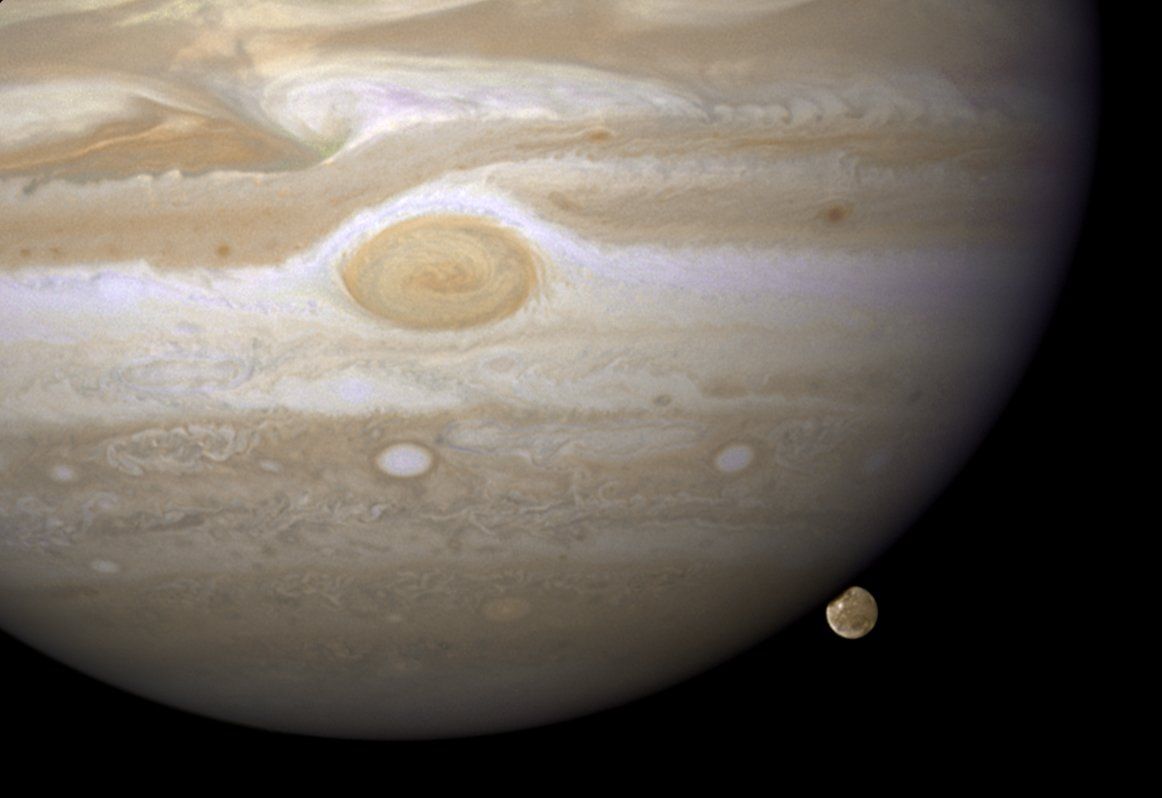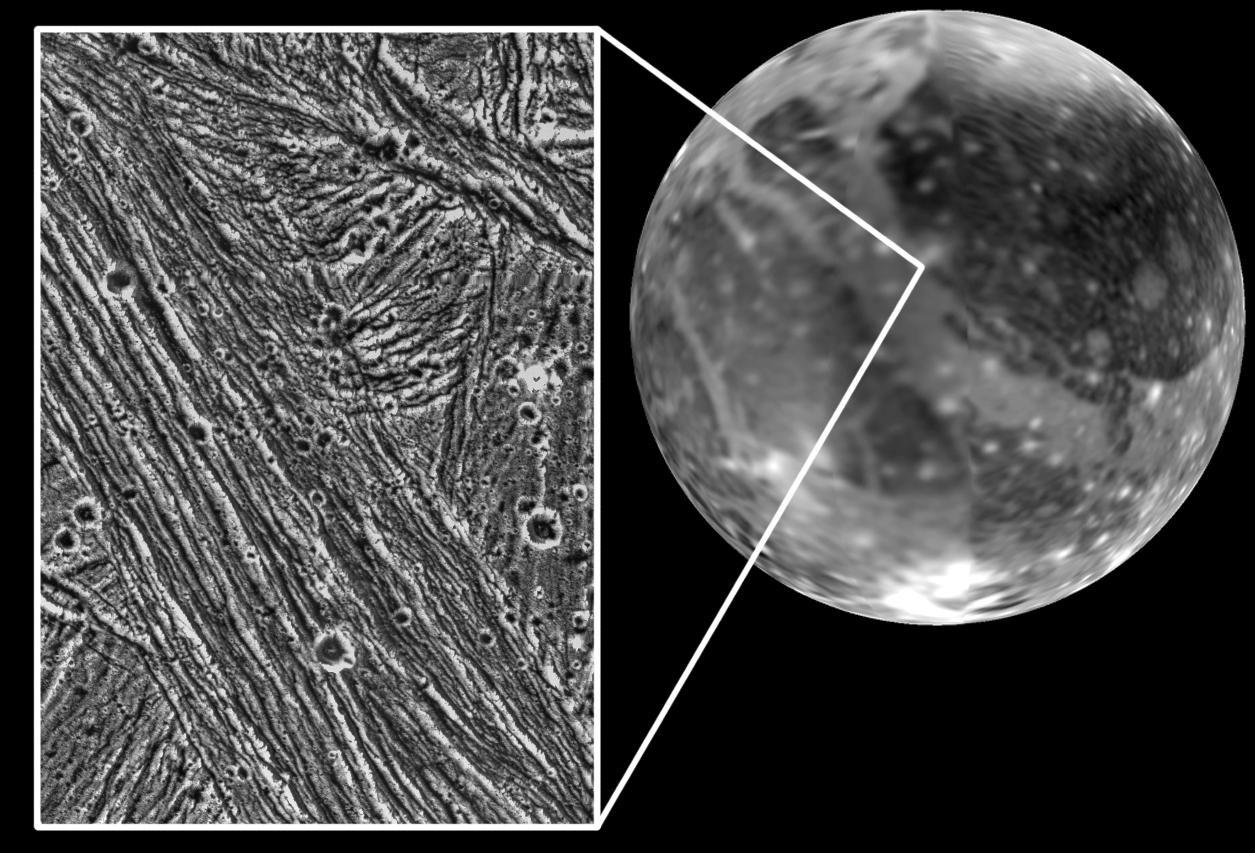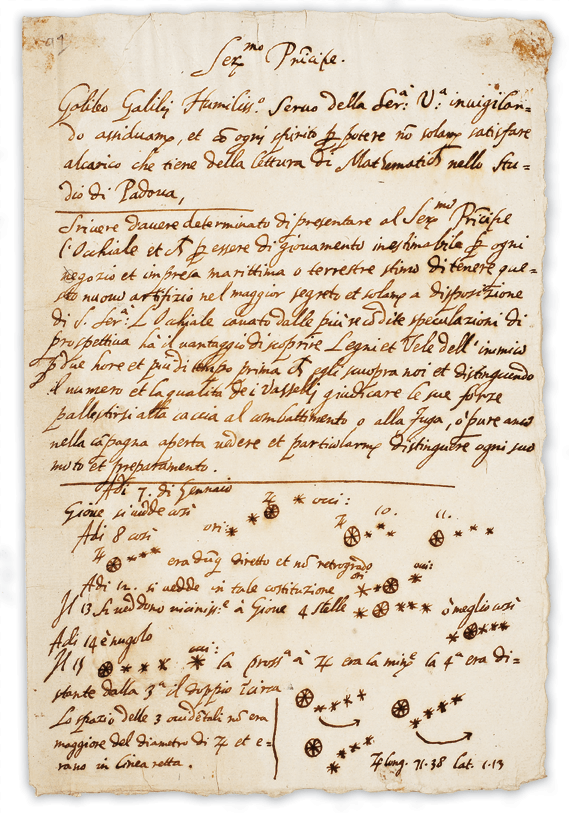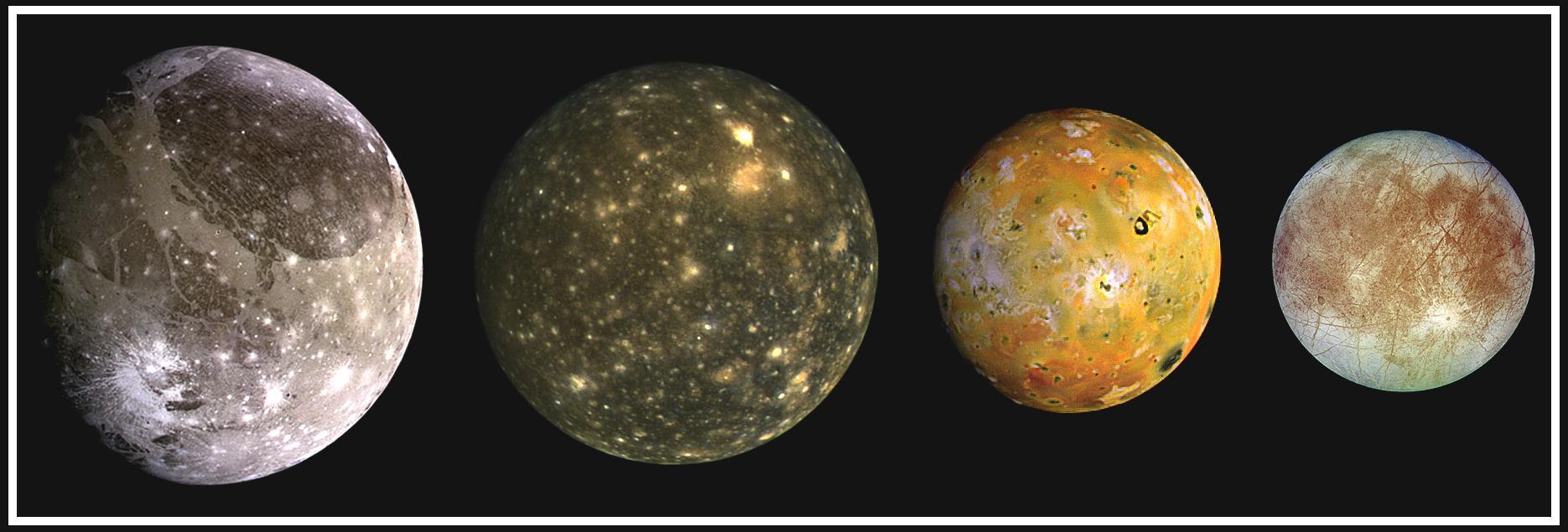This web page is created within BALTICS project funded from the European Union’s Horizon2020 Research and Innovation Programme under grant agreement No.692257.
Ganymede
Ganymede is not only the largest of Jupiter’s moons but also the largest of all the moons in the Solar System discovered so far. Its diameter is about 5,270 kilometres. Ganymede is not only larger than all the moons but also larger than Mercury.
Ganymede, like Europa, Io and Callisto, was discovered by Galileo Galilei in January 1610. It was originally called Jupiter III. Later, it was proposed to name it after Ganymede, the Trojan prince in Greek mythology who was carried by Zeus to Olympus, where the young man became a cupbearer of the gods.
Ganymede’s orbit is about 1 billion kilometres from Jupiter, and the moon completes one orbit in 7 Earth days. One side of the moon is always facing Jupiter. While Ganymede does one orbit of Jupiter, Europa does two orbits and Io does four orbits.
Ganymede is a stratified object with a solid inner core of iron surrounded by a layer of liquid iron and iron-sulfide, or outer core, a rocky mantle and a crust composed mostly of ice mixed with solid rock. The ice crust is several hundred kilometres thick. It is possible that there is also a subsurface ocean on Ganymede, possibly even several layers of liquid water, the deepest of which could be at the boundary between the mantle and the ice crust.
Ganymede is the only moon in the Solar System with its own magnetic field (~750 nT at the equator, ~1440 nT in the polar regions), but it is so small that it is hard to spot it in the huge and much stronger magnetic field of Jupiter. This means that of all Jupiter’s large moons, Ganymede might be the most suitable place to create a human colony. However, it should also be noted that the radiation dose (0.08 Sv) that a human would receive on Ganymede’s surface in a day would be about 300 times that received by a human on Earth in a whole year.
The relationship between the magnetic fields of Jupiter and Ganymede can be compared to the interaction between the magnetic fields of the Sun and the Earth. Just as charged particles from the Sun interact with the Earth’s magnetic field, causing auroras, so particles accelerated by Jupiter’s magnetic field enter Ganymede’s atmosphere, where auroras are observed in the polar regions.
Jupiter’s largest moon also has a very small atmosphere, mostly made up of oxygen, which is produced when ultraviolet radiation breaks down water molecules on the surface into hydrogen and oxygen. The lighter hydrogen flies off into space, but the oxygen remains close to Ganymede’s surface. The rarefied atmosphere does not provide heat retention, therefore the temperature on Ganymede’s surface is
-163oC.
About one-third of Ganymede’s surface is dark and heavily cratered. The dark terrain is thought to be at least 4 billion years old. Clays and organic compounds have been found there. The rest of the surface is lighter and slightly younger. Geological formations such as faults and rifts are predominant, probably caused when tidal forces heated and expanded the inner layers of the moon, stretching and deforming the crust.






















